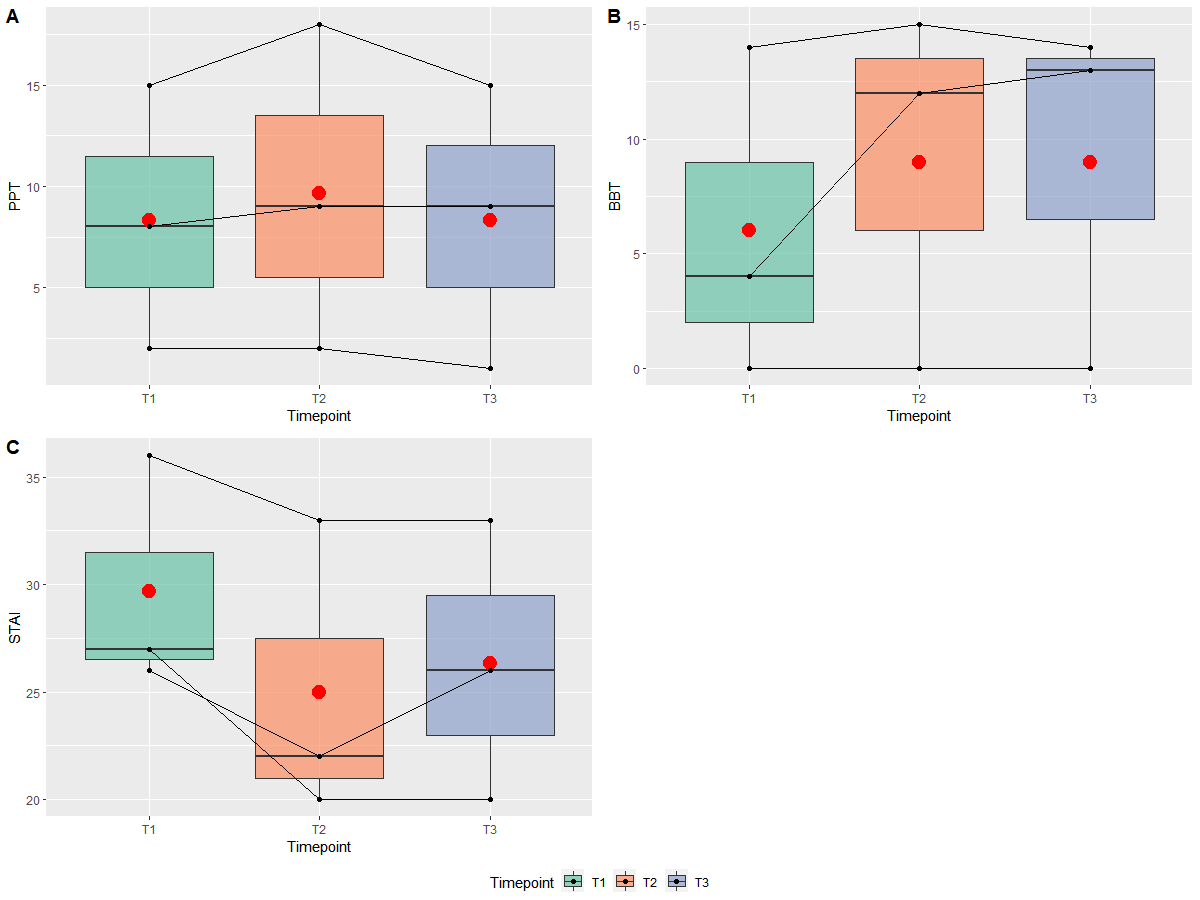Objective: To investigate if NMT with or without non-invasive brain stimulation can improve upper limb performance in patients with corticobasal syndrome
Background: Previous research suggests that NMT techniques such as Patterned Sensory Enhancement and Therapeutic Instrumental Music Performance can help patients with movement disorders improve upper extremity performance [1]. Additionally, transcranial direct current stimulation (tDCS) can modulate cortical activity [2]. Considering the lack of effective symptomatic treatments for CBS, we studied if combined NMT and tDCS could improve patients’ upper extremity performance.
Method: Participants were randomly assigned to 6 NMT+sham tDCS or 6 NMT+active tDCS sessions lasting 30 minutes each (twice a week for 3 weeks). Using a 32-electrode EEG/tDCS system, primary and association motor and somatosensory cortices contralateral to the more affected arm were targeted. Participants underwent gross/fine motor assessments (Purdue Pegboard test, PPT; Box and Block Test, BBT, respectively) and State-Trait-Anxiety-Inventory (STAI) at baseline (one week before the first session) (T1), after the last session (T2), and at follow-up one month after the last session (T3).
Results: As study enrollment is ongoing and the author (KK) was masked to whether the participants received active or sham tDCS, the results presented here show preliminary/descriptive data for the participants who have completed the study to date regardless of group assignment (N=3, age (mean±SD)=67.33± 8.02, years since diagnosis =2.83±0.76). On the PPT, participants improved fine motor/hand coordination from T1 (8.33±6.51) to T2 (9.67±8.02) but worsened back to baseline at T3 (8.33±7.02) (Figure 1A). For BBT, participants showed improvement on their more affected side from T1 (6.00±7.21) to T2 (9.00 ± 7.94) and remained improved in T3 (9.00±7.81) (Figure 1B). Anxiety levels decreased from T1 (29.67±5.51) to T2 (25.00±7.00) and increased from T2 to T3 (26.33±6.51) on the STAI (Figure 1C).
Conclusion: Our preliminary results suggest that NMT with/without tDCS may improve the quality of functional arm/hand performance and reduce anxiety levels in CBS. Some aspects of improvement may persist 1 month after the end of intervention. Effects of tDCS will be investigated after unmasking of active vs sham assignment.
References: [1] M. Thaut and V. Hoemberg, Handbook of neurologic music therapy. Oxford University Press (UK), 2014.
[2] M. A. Nitsche and W. Paulus, “Excitability changes induced in the human motor cortex by weak transcranial direct current stimulation,” The Journal of Physiology, vol. 527, no. 3, pp. 633–639, 2000, doi: 10.1111/j.1469-7793.2000.t01-1-00633.x.
To cite this abstract in AMA style:
K. Kang, A. Pantelyat. Neurologic Music Therapy (NMT) and Non-Invasive Stimulation for Upper Extremity Performance in Patients with Corticobasal Syndrome (CBS) [abstract]. Mov Disord. 2023; 38 (suppl 1). https://www.mdsabstracts.org/abstract/neurologic-music-therapy-nmt-and-non-invasive-stimulation-for-upper-extremity-performance-in-patients-with-corticobasal-syndrome-cbs/. Accessed January 6, 2026.« Back to 2023 International Congress
MDS Abstracts - https://www.mdsabstracts.org/abstract/neurologic-music-therapy-nmt-and-non-invasive-stimulation-for-upper-extremity-performance-in-patients-with-corticobasal-syndrome-cbs/

